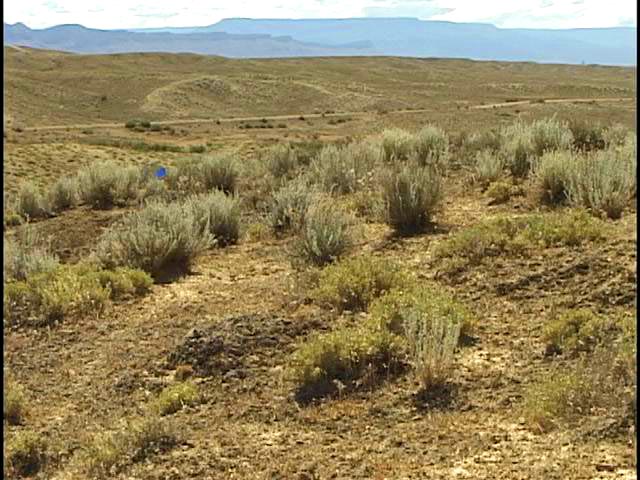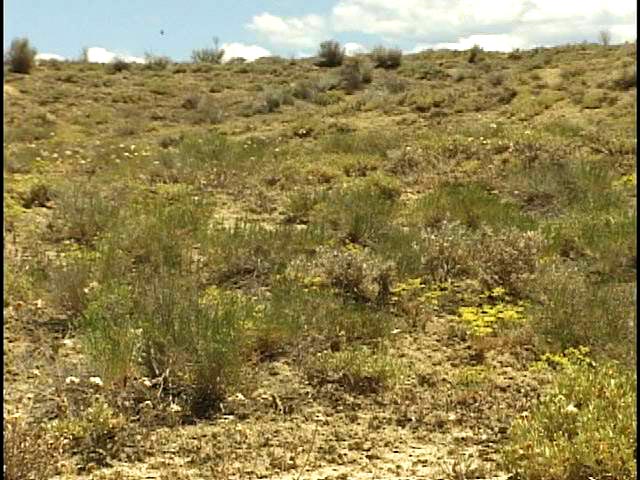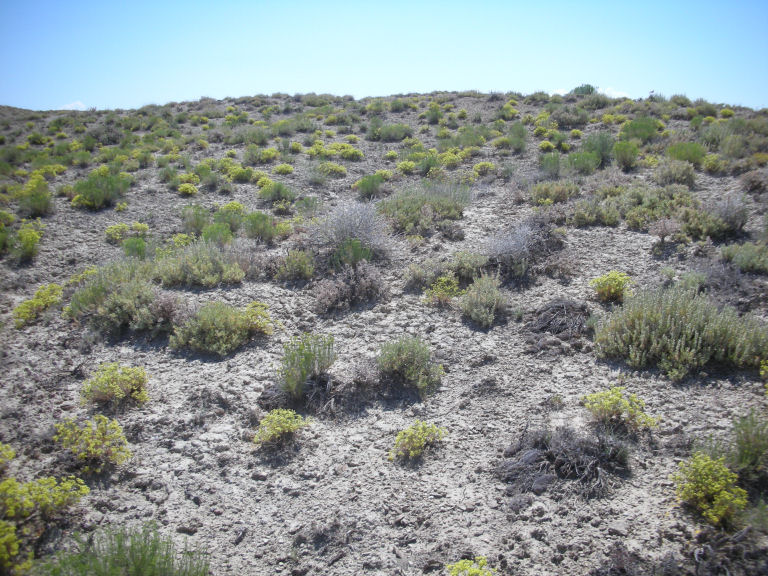


Vegetation



Our study site consists of adobe hills and washes (for pictures see here ). The vegetation appears fairly
sparse and the initial impression is of a severe desert. The vegetation is very
attractive although it is not very showy. The perennial vegetation in
this desert is largely chenopods, grasses and composites (for distribution maps
see here). Chenopods (saltbush
of four common species and greasewood) and composites (Xylorhiza
venusta, two species of rabbitbrush,
Tetradymia, snakeweed and Big sagebrush) are the common woody plants. The
perennial native grasses, galleta grass (Hilaria jamesii),
and Indian rice grass (Oryzopsis) and the annual introduced cheatgrass
(Bromus tectorum) are the most common grasses. The introduced annual wheatgrass, (Eremopyrum
triticeum) is becoming increasingly common. Check here
for an overview of the vegetation pattern.